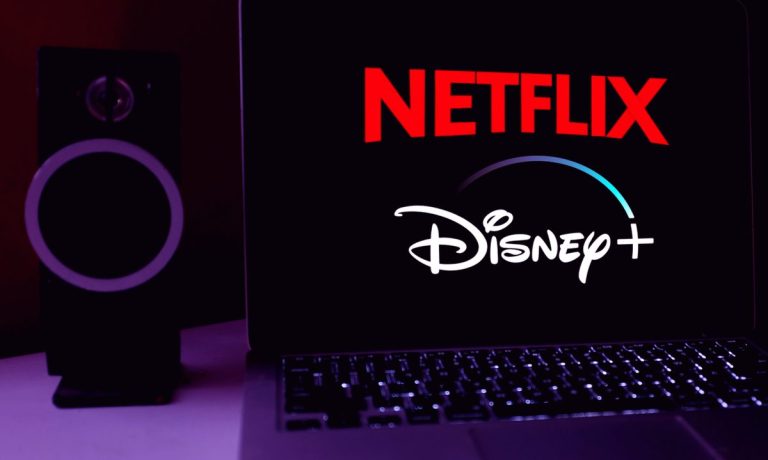
Endless TV with no ads. It was too good to last — and it didn’t.
Now the gloves are coming off, and streaming platforms are addressing revenue leakage and slowing subscriptions with ads and embedded opportunities as streaming seeks its next level.
A will-they-or-won’t-they cliffhanger for tens of millions of households that cut the cord to escape high cable costs and commercial interruptions is coming full circle as The Walt Disney Company announced in March that “Disney+ will expand its offerings for consumers by introducing an ad-supported subscription in addition to its option without ads, beginning in the U.S. in late 2022, with plans to expand internationally in 2023.”
Read more: Disney+ Adding Ad-Supported Subscription Later This Year
Fast-forward six weeks or so and the streaming platform that started it all, once pledging “no advertising … period” is backing off that position, as Netflix reported losing subscribers in the first quarter of 2022, the first such drop for the streaming service in a decade.
In a Tuesday (April 19) letter to shareholders, Netflix cited high penetration numbers, especially when factoring in the large number of households that share accounts, for the headwinds.
“The big COVID boost to streaming obscured the picture until recently,” it said.
See more: Slump in Netflix Subscribers Bucks Connected Economy’s Rise
Netflix introduced new paid account sharing features in March to manage losses from sharing.
Netflix CEO Reed Hastings told analysts on a downbeat earnings call Tuesday that “I have been against the complexity of advertising, and a big fan of the simplicity of subscription, but … I am a bigger fan of consumer choice. And allowing consumers who would like to have a lower price, and are advertising-tolerant, get what they want, makes a lot of sense.”
Hastings said an ad-supported Netflix is a year or two away. The New York Times quoted Hastings as saying “It’s pretty clear that it’s working for Hulu. Disney’s doing it. HBO did it. I don’t think we have a lot of doubt that it works. All those companies have figured it out.”
Meanwhile, CNBC reported Tuesday that to draw subscribers and pay for upping original content spend, “the company hiked prices of its service. Netflix said those price changes are helping to bolster revenue but were partially responsible for a loss of 600,000 subscribers in the U.S. and Canada during the most recent quarter.”
Streaming entertainment generates the kind of engagement that brands are seeking in the post-pandemic settling.
“Benchmarking the World’s Digital Transformation, The ConnectedEconomy™ Index Q1 2022,” a PYMNTS and Stripe collaboration, found that 61% of 15,000 respondents in 11 countries “frequently go online to have fun, specifically to stream music and videos.”
Get the study: The ConnectedEconomy™ Index
When Is Free Not Free?
On April 13, Amazon rebranded its ad-supported IMBd TV offering as Amazon Freevee.
“Customers are increasingly shifting to streaming ad-supported premium content, and we have developed Freevee to deliver them highly sought content with half the commercials of traditional TV,” Ashraf Alkarmi, director of Freevee, said in a press release.
Amazon Prime Video is the reigning champ of streaming monetization today, offering a sometimes-perplexing mix of free and paid programming along with in-platform signups to other subscription services like National Geographic, PBS Documentaries and many more.
On the podcast side of the ad dustup, Spotify acquired podcast advertising measurement service Podsights and podcast analytics platform Chartable in February.
Spotify said the acquisitions build on its Streaming Ad Insertion (SAI) technology that serves ads in real time and understands whether users are actually listening to a specific ad. It plans to add interactivity features that let listeners engage with ads directly — instead of having to recall a coupon code for a promotion they heard, for instance.
See also: Spotify’s Premium Subscriber Base Expands to 165M Amid Push Toward Monetizable Content
Shoppable Streaming Beckons
Embedding commerce into the streaming entertainment mix is another strategy that’s expected to gain traction as new subscriptions plateau and growth comes from other areas.
Spotify introduced its call-to-action cards initiative in January, saying “Call-to-action cards (CTA cards) are clickable, interactive companion display units for digital audio ads. They combine visuals and customizable text to deliver a clear, simple message, along with a first for podcast ads: a clickable call-to-action.”
Amazon Prime Video raised rates this year and is also getting more serious about integrating its entertainment and retail operations by making streaming TV shoppable.
Read more: Amazon’s Andy Jassy Hints More Prime Benefits on the Way
The platform launched its Amazon Live Creator app in 2019 for livestream selling by individuals.
In a 2021 blog post, the company said, “Amazon Live utilizes Amazon IVS’ low latency live streaming so that creators and customers have the ability to interact through live chat,” adding that “products selected by creators are available in the shopping carousel located alongside the stream, making it easy for customers to shop while they watch.”
See also: Will Amazon Make Streaming Shoppable?
On April 12, the Internet Advertising Bureau (IAB) released its Internet Advertising Revenue Report: Full Year 2021, saying digital video ads saw their biggest increase since 2006 last year with revenues of $39.5 billion, and digital audio seeing year-over-year growth of 57.9% to $4.9 billion. Social media advertising, meanwhile, rose 39.3% to $57.7 billion.
Read also: New Platform Model Brings Commerce to in-Game, Metaverse Ads